Abstract Expressionism - Characteristics, History, & Artists
It’s been over a century since Abstract Expressionism emerged as a major movement and dominated the art world for a long time. It remains an important aspect of contemporary art, and fine examples can be found in NYC’s top art museums, including the MoMA, the Metropolitan Museum of Art, the Guggenheim, and the Whitney. The origins of Abstract Expressionism date back to the 19th century with the emergence of “art for art’s sake” – a philosophy that argued for the idea that painting and sculpture should free themselves from naturalism to focus on the essence of art. Let's read on to learn about this magical yet unique world of art - its defining characteristics, rich history, and notable artists who shaped and propelled this art movement into a global phenomenon.
What is Abstract Expressionism?
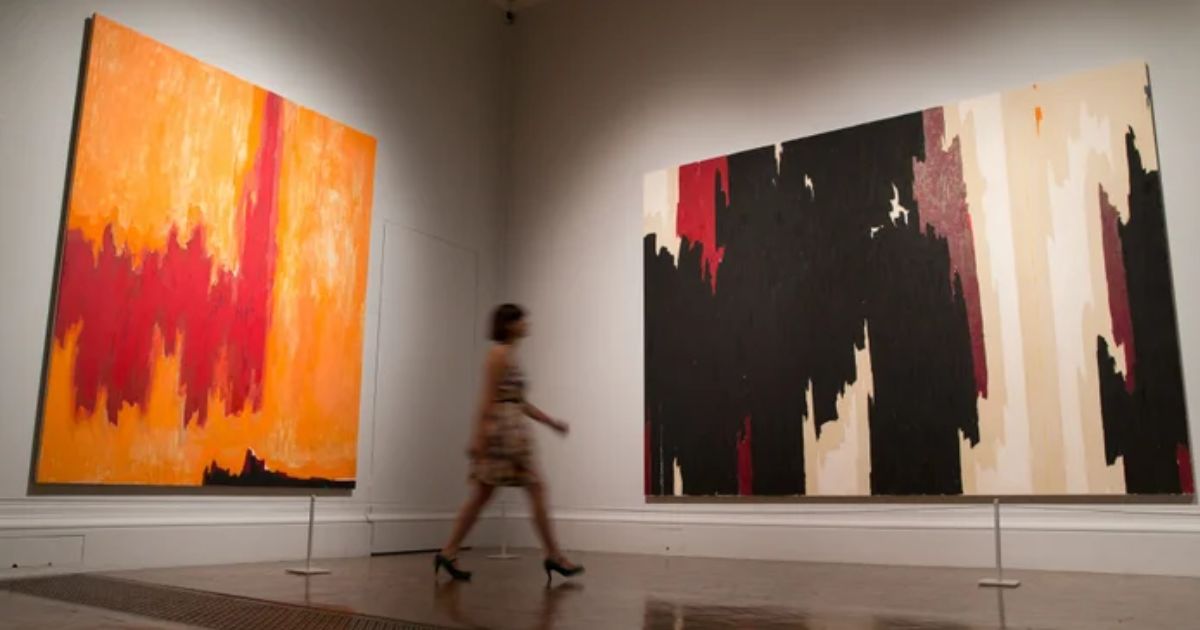
During the early years of the 20th century, Abstract Expressionism became a dominant trend in the world. This school completely went against the traditional concept that art is an imitation of the natural world. This explains why abstract works cannot find any objects or objects that can be seen in the outside world.
With Abstract Expressionism, the content of the painting will be expressed freely and freely according to the feelings and thoughts of each artist through a unique combination of many shapes, lines, and colors.
It can be said that art at this time has shifted from a form of simulation to a form of pure emotion. This art movement is also the voice of very unique personalities belonging to the colorful subconscious world. Through that, abstract artists will be free to create drawing styles, allowing them to have a deep sensitivity to their unconsciousness to express themselves.
Characteristics of Abstract Expressionism
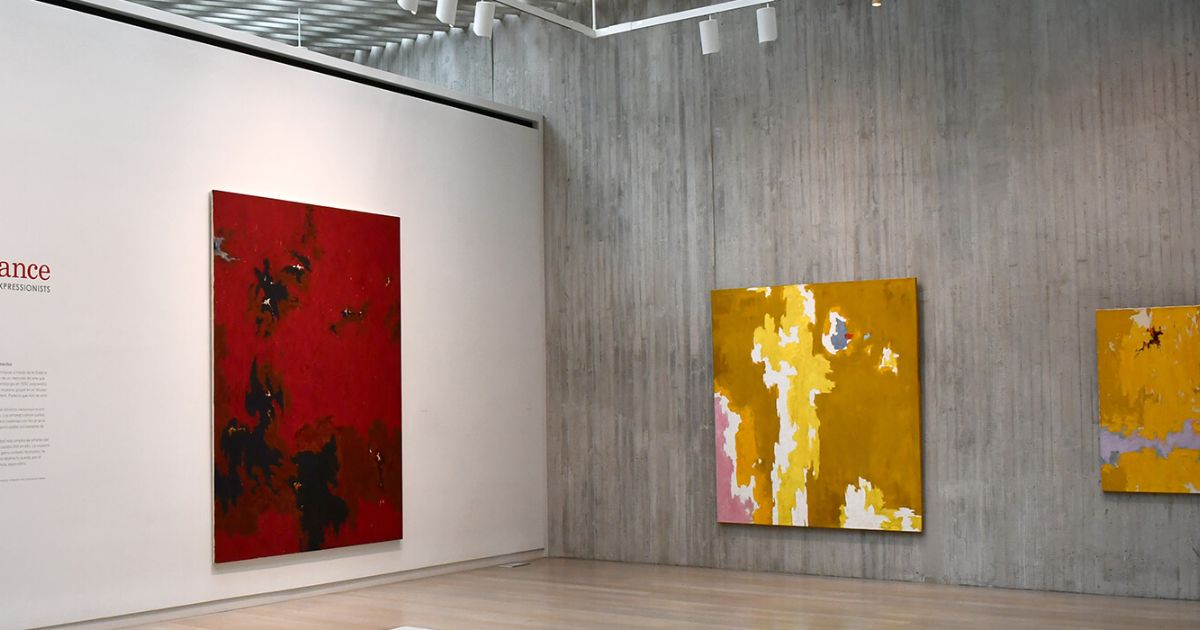
Abstract Expressionism is known for its spontaneous, automatic, or subconscious creation. Here are the key characteristics of this art movement:
Emphasis on Spontaneity and Improvisation
Abstract Expressionists valued the act of painting itself, often working with quick, gestural brushstrokes or pouring and dripping paint directly onto the canvas. The process was seen as a form of expression with less focus on the outcome.
Non-Representational Imagery
The movement is characterized by non-representational or non-figurative art, meaning the works do not depict recognizable objects or scenes. Instead, they explore shapes, colors, and forms abstractly.
Large-Scale Works
Many Abstract Expressionist paintings are large in scale. It is the artist's place to fully engage in the physical act of painting and immerse the viewer in the experience.
Focus on Emotion and Personal Expression
Artists of this movement sought to convey deep emotional states or personal experiences through their work. The abstract nature of their art was meant to evoke a visceral response from the viewer, often leaving interpretation open.
Use of Bold Colors and Dynamic Compositions
Abstract Expressionist works often feature vibrant, contrasting colors and dynamic compositions that draw attention to the energy and movement within the painting.
Action Painting and Color Field Painting
Two main sub-genres within Abstract Expressionism are Action Painting and Color Field Painting. Action Painting, associated with artists like Jackson Pollock, is specific about the physical act of painting. Color Field Painting, associated with artists like Mark Rothko, emphasizes large areas of color applied to the canvas, creating a meditative or contemplative effect.
Influence of Surrealism and Psychoanalysis
Abstract Expressionism was influenced by Surrealism, particularly the interest in subconscious thought and automatic creation. The movement was also shaped by contemporary ideas in psychoanalysis, particularly those of Carl Jung, which particularized the exploration of the unconscious mind.
This movement marked a significant shift in the art world, establishing New York City as a new center of the art world and paving the way for a more open and experimental approach to art-making.
Abstract Expressionism Movement Overview
It must be admitted that nothing is natural. Therefore, if art wants to go beyond reality, it must go through each step.

The work “Champs de Mars. La Tour rouge” by French artist - Robert Delaunay
The 19th-century schools included Fauvism and Impressionism, which used free brush strokes and colors. It was followed by the step of Abstract Expressionism. Therefore, it can be said that these two schools contributed significantly to the creation of abstract painting. Because, through these two schools, for the first time, the image of a “real” world was no longer copied and simulated, but was filtered through the artist’s lens with many multi-dimensional perspectives, disassembled and rearranged in a new order.
Early Beginnings and Influences (1930s-1940s)
The roots of Abstract Expressionism can be traced back to several pre-World War II artistic movements and intellectual currents:
European Modernism: Many of the artists who would later become central figures in Abstract Expressionism fall under European modernist movements influence like Surrealism, Cubism, and Fauvism. Surrealism, in particular, with its emphasis on the unconscious mind and automatism, had a significant impact. The arrival of European émigré artists and intellectuals in New York during the 1930s and 1940s, such as Marcel Duchamp, Max Ernst, and André Breton, brought these ideas to American shores.
The Great Depression and the WPA: During the 1930s, the Works Progress Administration (WPA) Federal Art Project supported many young American artists. This period gave rise to a sense of community among artists like Jackson Pollock, Willem de Kooning, Lee Krasner, Mark Rothko, and others, who later became key figures in Abstract Expressionism. The WPA period also allowed artists to experiment with large-scale murals, a precursor to the grand canvases characteristic of Abstract Expressionism.
Psychological Theories and Existential Philosophy: Freudian and Jungian psychology provided intellectual underpinnings for many Abstract Expressionists. Existential philosophy, which explored themes of individual freedom, alienation, and the search for meaning in an indifferent universe, was another crucial influence.
Emergence of the Movement (Late 1940s)
After World War II, the American art scene began to shift dramatically. With Europe devastated by the war, New York City emerged as the new epicenter of the art world. This period saw the formal emergence of Abstract Expressionism as a dominant movement.
Shift from Figurative to Abstract Art: Influenced by the disillusionment of the war years and the desire to break from traditional European aesthetics, many American artists began moving away from figuration toward abstraction. They sought to create a new form of art that could express universal themes and emotions without relying on recognizable subject matter.
Action Painting and Gestural Abstraction: By the late 1940s, artists like Jackson Pollock, Willem de Kooning, Franz Kline, and Lee Krasner began to develop a style that emphasized the physical act of painting. This approach, known as "Action Painting," was characterized by dynamic brushstrokes, dripping, pouring, or flinging paint onto the canvas in a way that conveyed spontaneity, movement, and emotional intensity. Pollock's "drip" paintings became iconic representations of this style.
Color Field Painting: At the same time, other artists like Mark Rothko, Barnett Newman, and Clyfford Still developed a different approach within Abstract Expressionism known as "Color Field Painting." These artists focused on creating large, flat planes of color that aimed to evoke meditative, spiritual experiences. Their works were less about the physical act of painting and more about the interaction of color, form, and scale to elicit emotional responses.
Peak and Recognition (1950s)
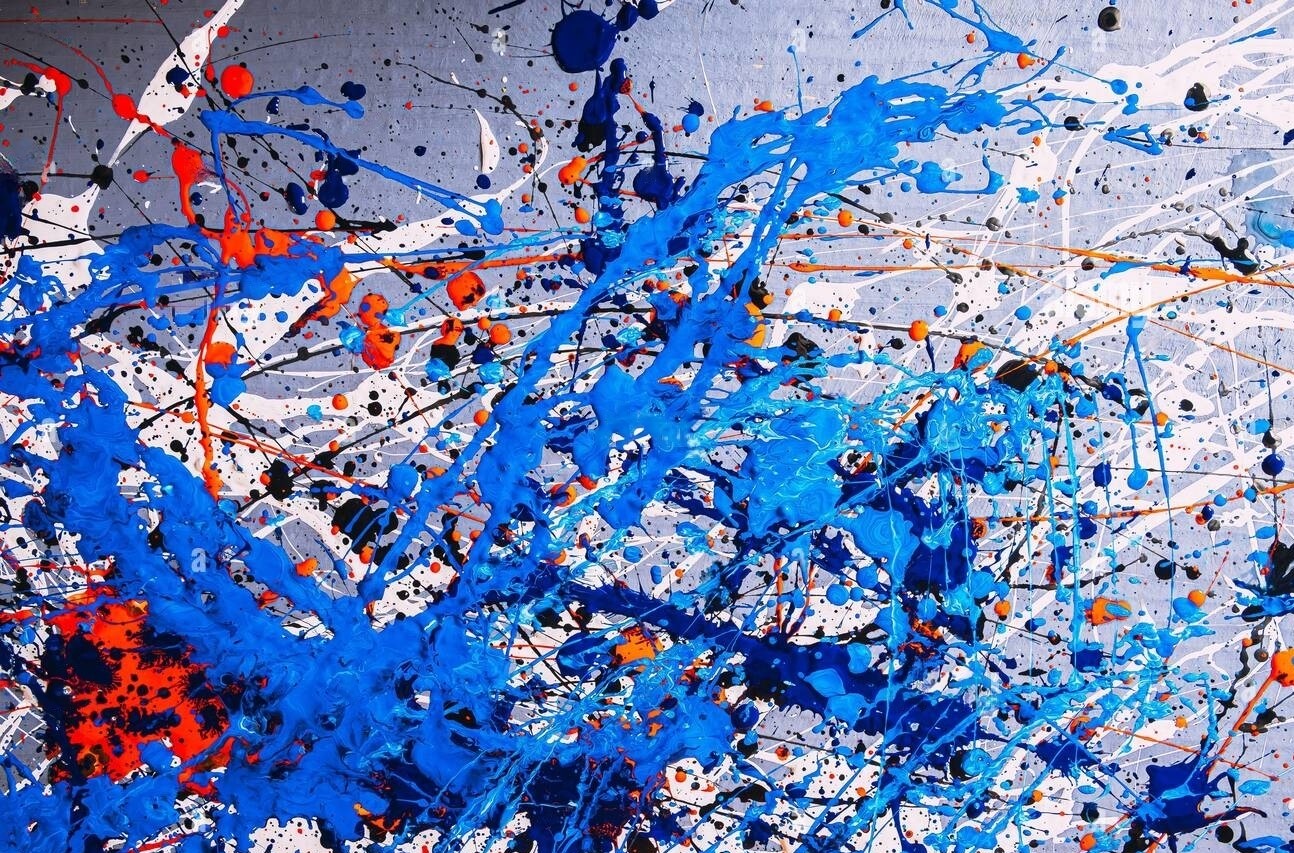
The 1950s marked the peak of Abstract Expressionism, with its artists gaining widespread recognition in the United States and internationally.
Abstract Expressionism became a symbol of American freedom, individuality, and cultural sophistication during the Cold War. The U.S. government, through organizations like the CIA, covertly supported the international promotion of this art movement as a form of cultural diplomacy, using it to counter Soviet Realism and demonstrate the supposed superiority of American democracy and free expression.
The movement achieved prominent success both critically and commercially. Exhibitions in New York, Paris, and other global cities helped establish Abstract Expressionism as the leading avant-garde movement of its time.
Decline and Legacy (1960s and Beyond)
Movements such as Pop Art, Minimalism, and Conceptual Art arose as reactions against the emotional intensity and perceived elitism of Abstract Expressionism.
Despite the decline in its dominance, Abstract Expressionism's impact on art remains profound. It paved the way for future generations of artists to explore abstraction, emotion, and non-representational forms.
Does the development of science affect artistic thinking?
It can be said that the developments in science also partly affect contemporary artistic thinking, such as the theory of relativity and quantum physics. They raise questions about the world that has been lived, and from there, Abstract Expressionism appears as a reaffirmation of that idea.
However, after all, humans can only perceive and shape the world through their five senses with brains. Of course, those abilities are limited. Because they cannot see, smell, hear, touch, or taste things are naturally considered non-existent. Not to mention, the ability to process information in each person's brain is not the same. Therefore, the real world seems to be different and even more different from its inherent world.
Or when learning about a person, only relying on the perception apparatus to a process to be performed based on limited knowledge and experience. If learning according to "reality," only a few types of people can be discovered and identified. So why not free yourself from the desire to find a 100% objective world? Instead, accept and exploit a hidden world deep inside, connecting with yourself and simultaneously connecting with your surroundings. From there, Abstract Expressionism was born, allowing people to see in their minds what they could not see with the naked eye.
The parallel trends in Abstract Expressionism
Abstract Expressionism exist in two parallel genres: Geometric Abstraction and Lyrical Abstract paintings.
Geometric Abstraction
Geometric Abstraction is one of the abstract art forms based on the use of geometric shapes and colors to convey emotions most directly. Although this genre was quite popular with avant-garde artists in the early 20th century, similar geometric shapes have been used in art and decoration since ancient times.
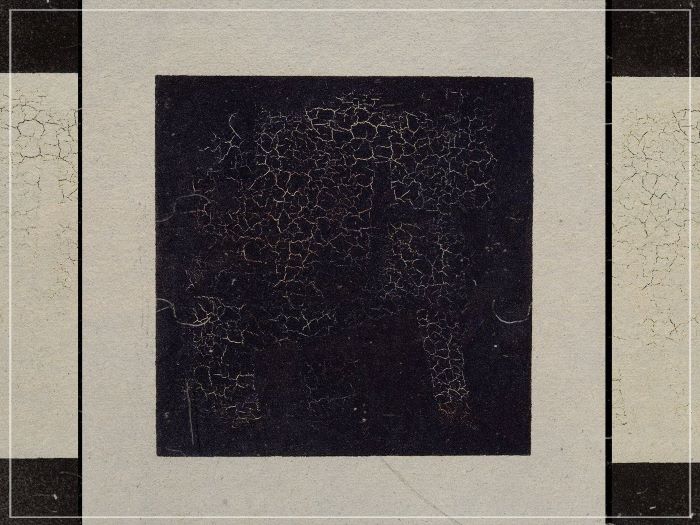
Carré noir sur fond blanc – Kazimir Severinovich Malevich (1915)
Looking at this work, people will surely exclaim, “I can easily draw a square too.” But this square is not that simple, and to create such a work, the artist must have a thorough knowledge of color, proportion, and image composition. In this painting, you can see that “the square is not really square - none of its edges are parallel to the edges of the frame.” In addition, it is not really black because Malevich used a mixture of paints that did not contain black for the painting.
It is said that this painting was created by Malevich by accident. According to the story, just before a major exhibition of Futurist painters, Malevich and his associates had to create works for display. However, Malevich did not like what he had painted and covered it with black paint, thus making the legendary square. But, the artist Malevich asserted that this painting carries a mystical spiritual state under the influence of “cosmic consciousness,” the work is the liberation of the so-called “nothing” - it is pure freedom. Therefore, he especially gave it the best place in the exhibition room.
Lyrical Abstraction
Unlike Geometric Abstraction, Lyrical Abstraction expresses the “seen” world and uses clear shapes. With lyrical abstract painting, each artist will create his language. Therefore, the expression of the artist’s personality and emotions will not be bound by any rules or theories. That is why lyrical abstract paintings often bring a more free and “floating” feeling.
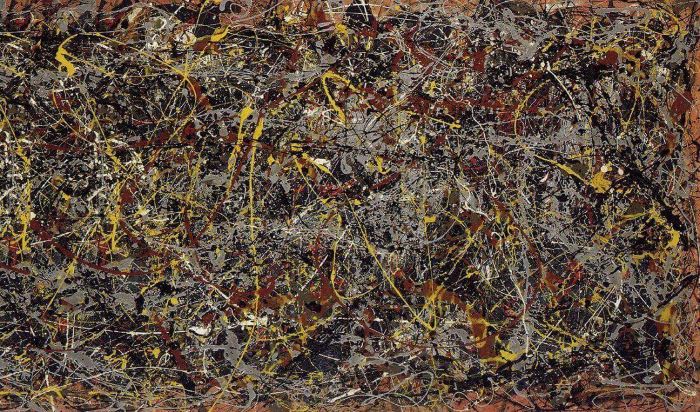
No.5 – Jackson Pollock (1948)
This abstract painting is painted in the drip painting style. That is, using paint boxes to bounce onto the painting placed vertically. This method is very unique, it has broken all the conventions of art, encouraging creativity and expression with fewer boundaries.
Abstract Expressionist Artists, You Need to Know
Follow us to discover the most influential abstract artists of all time.
Vasily Kandinsky (1866–1944)
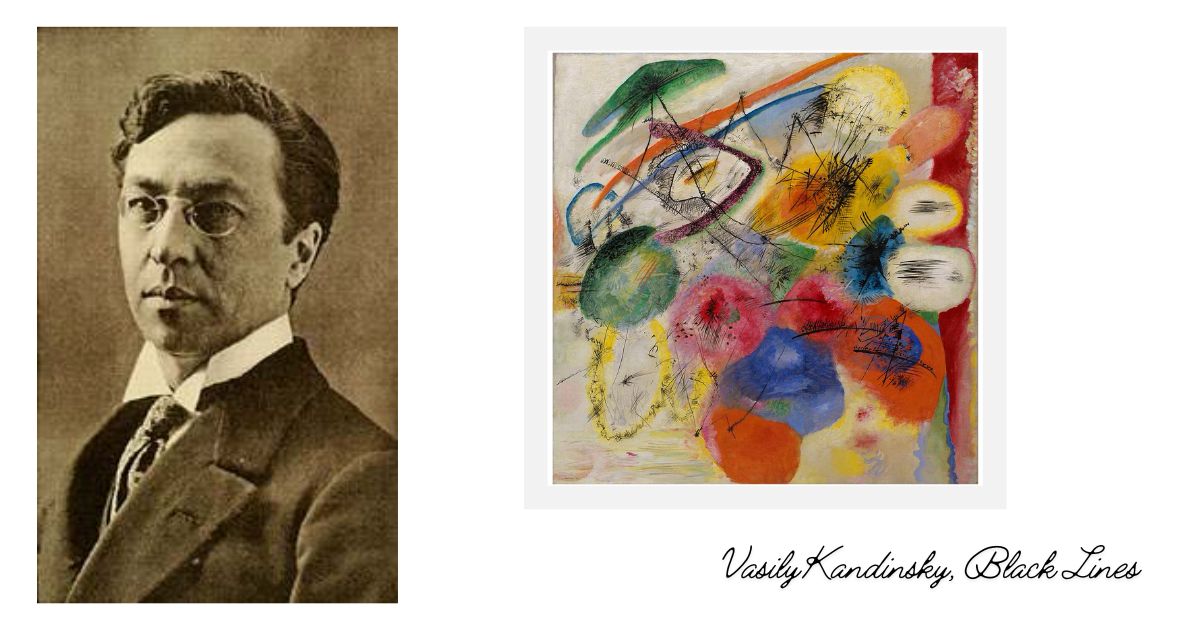
(Vasily Kandinsky, Black Lines (Schwarze Linien), 1913)
As a theorist, Kandinsky's writings, particularly his book "Concerning the Spiritual in Art," were highly influential. He proposed that color and form could have an emotional and spiritual impact independent of representational content.
Kandinsky's work evolved from figurative painting to increasingly abstract compositions, where he sought to free art from the constraints of the natural world. His use of color, form, and line was intended to evoke a sense of harmony and emotion, much like music.
Piet Mondrian (1872–1944)
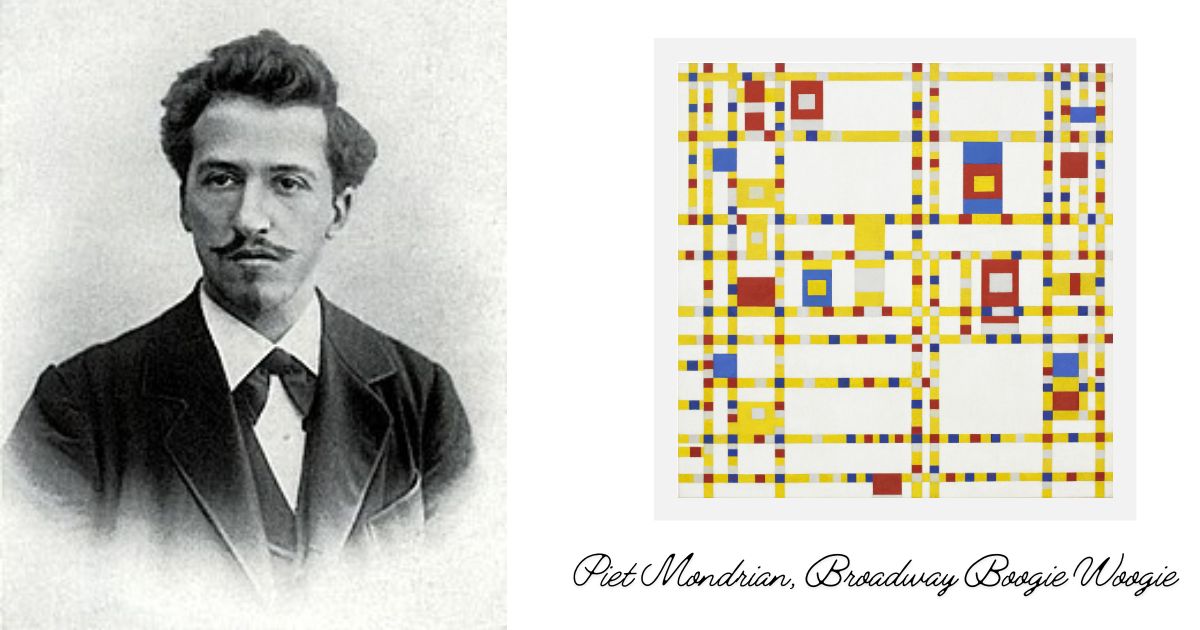
(Piet Mondrian, Broadway Boogie Woogie, 1942-43)
Piet Mondrian (1872–1944) was a Dutch painter and one of the most influential figures in the development of modern art. Around 1912, he became increasingly interested in Cubism, which inspired him to experiment with abstraction. His style evolved dramatically as he sought to distill the essence of visual reality into its purest forms. By the 1920s, Mondrian had developed his signature style, known as Neoplasticism or De Stijl. This style is marked by the use of a limited color palette (primary colors red, blue, and yellow, along with black, white, and gray), straight horizontal and vertical lines, and a grid-based composition.
Lyubov Popova (1889–1924)
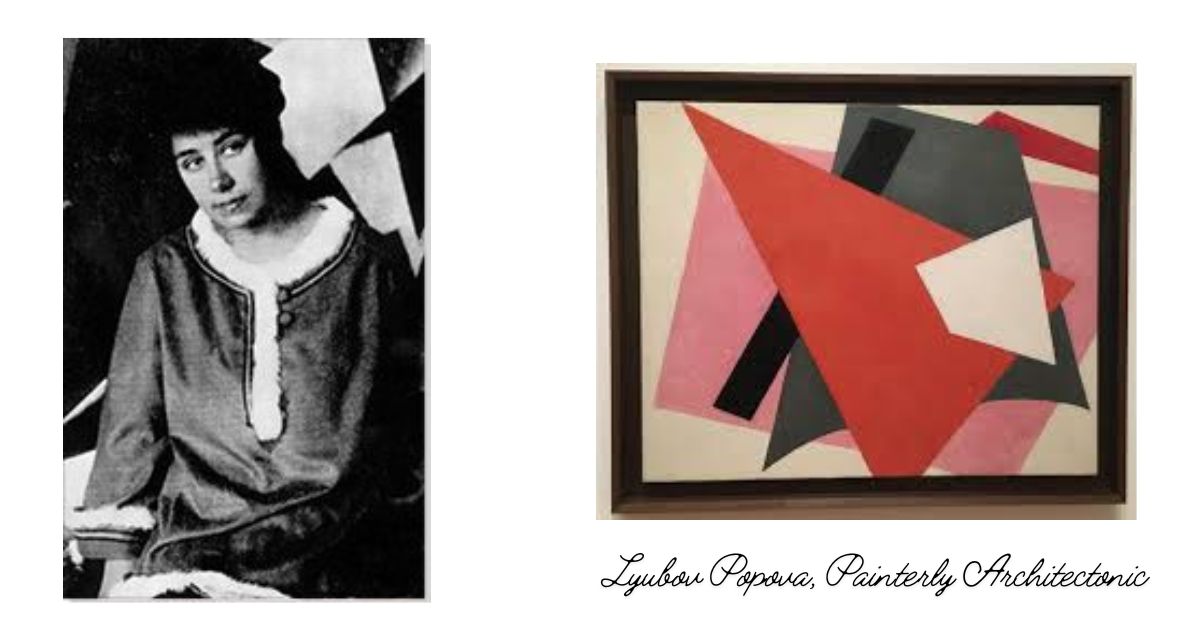
(Lyubov Popova, Painterly Architectonic, 1917)
Lyubov Popova (1889-1924) was a prominent Russian avant-garde artist, painter, and designer who contributed to the development of abstract art in the early 20th century.
Born in Ivanovskoe, Russia, Popova came from a cultured and wealthy family, which allowed her to pursue a serious education in art. She studied under various Russian and European artists, including Konstantin Yuon and Ivan Dudin, and traveled extensively through Western Europe, where she was influenced by Cubism and Italian Futurism.
Despite her untimely death at the age of 35 due to scarlet fever, Popova's influence on Russian avant-garde art was profound. Her experimentation with form, color, and space, along with her contributions to design and theory, continue to be celebrated in exhibitions worldwide.
Skilltrans introduces you to explore these related courses. Please click on the course name below to learn more:
Cartoon Drawing For Absolute Beginners
You will learn how to draw cute cartoon characters. Also, you will learn how to draw simple cartoon backgrounds. We’ll start with the basics. For example whats the anatomy of our cute cartoon characters and what shapes we’ll use to draw them. Then we’ll jump into different facial expressions so that you can express emotion with your characters. Also different hairstyles, a lot of practice sheets, and many more.
Character Art School: Complete Coloring and Painting
Whether you want to learn to color and paint characters for games, comics, cartoons, manga, animation and more, this course has you covered. I'm not teaching you a 'method' or a 'way' to color and paint, I'm teaching you to be a fundamentally good character colorist and painter.
Painting in the loose style with watercolors is easily one of my favorite things to do. Learn how to use simple brushstrokes to create six different flowers: lavender, lilac, hibiscus, cherry blossom, calla lily, and magnolias. So get ready to let loose with your brush and apply lots of creative freedom to your paintings.
Conclusion
Abstract Expressionism is a unique art movement, that goes against traditional art concepts. This is a form of non-material art, the objects depicted in the painting cannot be found in real life. Hopefully, the above information has helped you better understand this unique school of painting.
Art is timeless. To learn more about these timeless beauties, you can sign up for Skilltrans courses. We will help you explore this colorful world.

Meet Hoang Duyen, an experienced SEO Specialist with a proven track record in driving organic growth and boosting online visibility. She has honed her skills in keyword research, on-page optimization, and technical SEO. Her expertise lies in crafting data-driven strategies that not only improve search engine rankings but also deliver tangible results for businesses.



